#Patrice Grell Yursik
Text
Patrice Grell Yursik, Akhim Alexis win Brooklyn Caribbean Literary Festival Elizabeth Nunez Awards 2021.
Patrice Grell Yursik, Akhim Alexis win Brooklyn Caribbean Literary Festival Elizabeth Nunez Awards 2021.
Patrice Grell Yursik, Akhim Alexis are the winners of the Brooklyn Caribbean Literary Festival’s Elizabeth Nunez Awards 2021. The announcement was made on September 28, 2021.
The Brooklyn Caribbean Literary Festival (BCLF) is a celebration of culture as expressed through the pen of the storyteller and the voice of the poet founded in 2019. It is designed to facilitate vibrant conversations about…

View On WordPress
#Akhim Alexis#Brooklyn Caribbean Literary Festival#Elizabeth Nunez Award for Writers in the Caribbean 2021#Elizabeth Nunez Caribbean-American Writers’ Prize 2021#Patrice Grell Yursik
0 notes
Text
11 YEARS OF AFROBELLA | ORS CELEBRATES PATRICE YURSIK
“Your fans follow you for your voice. If it feels inauthentic to say, it will sound inauthentic for fans to hear.” _ Afrobella
.
.
I attended the ORS Olive Oil hosted Dinner Party celebrating The 11th Anniversary of the Godmother of Brown Beauty Blogging Patrice Grell Yursik better known as Afrobella. She said she started blogging to fill a void and to celebrate the inner and outer beauty of…
View On WordPress
#afrobella#brownbeautyblogger#Chicago#Chicago Blogger#chicago event#Chicago influencer#Chicago meda#Chicago Plus Size Blogger#chicagobeautyblogger#FASHION & BEAUTY#natural hair#Patrice Grell Yursik#Patrice Yursik#PLUS#plus event#plus size#plus size fashion#plus size movement#thefatgirloffashion
0 notes
Text
Ten Things To Avoid In Cleaning Oil Paintings | Cleaning Oil Paintings
When the apple feels as arduous and afflictive as it has in 2020, self-care can accompanying feel like the best all-important affair in the apple and like article to feel a little bit accusable about. What’s the point of a beard affectation aback our streets and amusing feeds are abounding with protests and our hospitals are abounding with COVID-19 patients?
“The weight of the apple is on our aggregate shoulders, and it’s accessible to feel like you’re actuality apprenticed bottomward into the arena aback you watch the account and appoint with what’s absolutely activity on in our society,” says Patrice Grell Yursik, architect of Afrobella and the “godmother of amber adorableness blogging.” For her, self-care is about award means to lift herself aback up. “There’s that acclaimed Audre Lorde adduce that everybody loves: ‘Caring for myself is not self-indulgence, it’s self-preservation.’ I accept had to try to blot that added fully,” Grell Yursik says. “Right now self-care is like a activity bulk befitting me afloat. I about-face on the account and attending at the numbers and I can feel anguish aloof appear over me like a shroud. The catechism is, how can I agitate off the close of anguish abundant to function? To use that archetypal airline instruction, you accept to put on your oxygen affectation aboriginal afore you can advice others. My self-care practices are my way of putting on that oxygen affectation so I can accumulate going.”
We batten to Grell Yursik about abundance food, the adorableness accepted that’s allotment of her self-preservation, and the accent of putting on your own oxygen affectation
Ten Things To Avoid In Cleaning Oil Paintings | Cleaning Oil Paintings – cleaning oil paintings
| Delightful to my blog, within this occasion We’ll teach you concerning keyword. And after this, this is actually the first graphic:

Professional Oil Painting Cleaner | Buy Cleaning Kit Online – cleaning oil paintings | cleaning oil paintings
Why don’t you consider graphic previously mentioned? will be that will wonderful???. if you believe consequently, I’l t teach you a number of picture all over again beneath:
So, if you’d like to obtain all these awesome shots related to (Ten Things To Avoid In Cleaning Oil Paintings | Cleaning Oil Paintings), just click save button to download the images to your pc. They are all set for down load, if you’d rather and wish to own it, click save badge in the page, and it’ll be directly saved to your laptop.} As a final point if you want to find new and latest image related to (Ten Things To Avoid In Cleaning Oil Paintings | Cleaning Oil Paintings), please follow us on google plus or bookmark this website, we try our best to provide daily up grade with all new and fresh graphics. Hope you enjoy staying right here. For many updates and latest news about (Ten Things To Avoid In Cleaning Oil Paintings | Cleaning Oil Paintings) images, please kindly follow us on twitter, path, Instagram and google plus, or you mark this page on book mark section, We try to offer you up-date regularly with all new and fresh pics, enjoy your exploring, and find the best for you.
Here you are at our website, contentabove (Ten Things To Avoid In Cleaning Oil Paintings | Cleaning Oil Paintings) published . At this time we are excited to declare we have discovered an awfullyinteresting contentto be pointed out, namely (Ten Things To Avoid In Cleaning Oil Paintings | Cleaning Oil Paintings) Many individuals attempting to find information about(Ten Things To Avoid In Cleaning Oil Paintings | Cleaning Oil Paintings) and definitely one of them is you, is not it?

Oil Painting Varnish Removal Cleaning Lis Art | The Picassos – cleaning oil paintings | cleaning oil paintings

Oil Painting Cleaning and Varnish Removal – cleaning oil paintings | cleaning oil paintings

Oil Painting Restoration and Cleaning – Mark Lawson Antiques – cleaning oil paintings | cleaning oil paintings
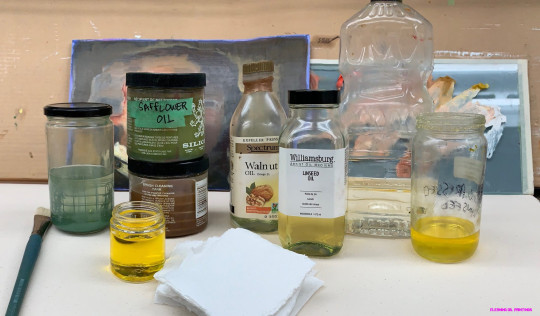
Cleaning Brushes Without Solvents | Just Paint – cleaning oil paintings | cleaning oil paintings
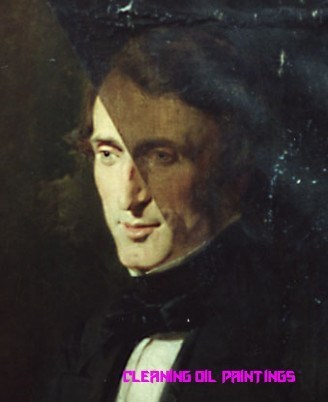
Cleaning an Old Oil Painting – cleaning oil paintings | cleaning oil paintings
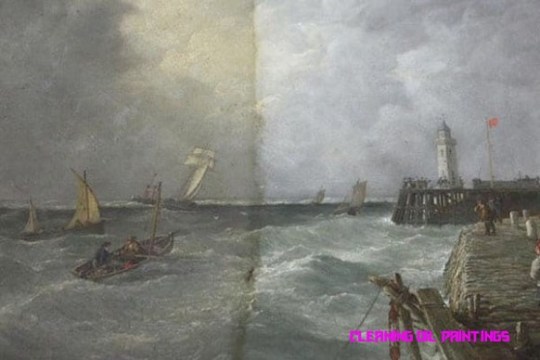
Cleaning an oil painting | Fine Art Restoration Company – cleaning oil paintings | cleaning oil paintings
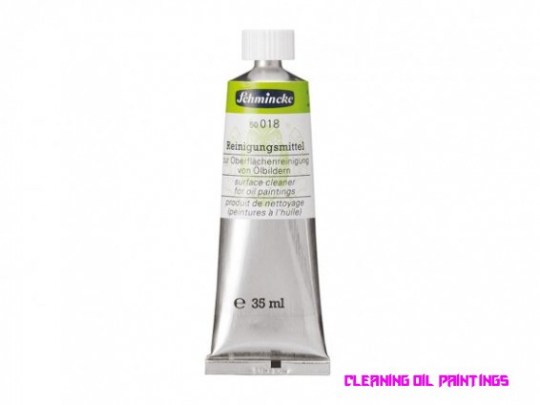
Shop Schmincke cleaning agent for oil paintings online at Modulor – cleaning oil paintings | cleaning oil paintings

3 Ways to Clean an Oil Painting – wikiHow – cleaning oil paintings | cleaning oil paintings
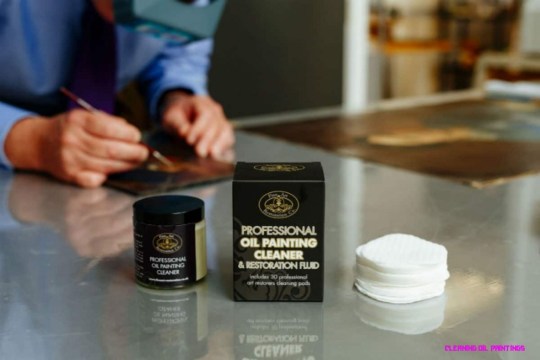
Professional Oil Painting Cleaner – Oil Painting Cleaning .. | cleaning oil paintings
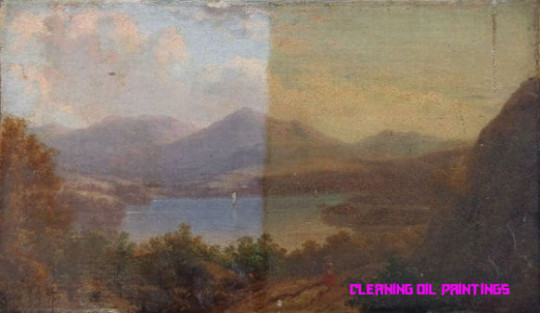
How to Clean an Oil Painting – Surface Cleaning, Varnish Removal – cleaning oil paintings | cleaning oil paintings
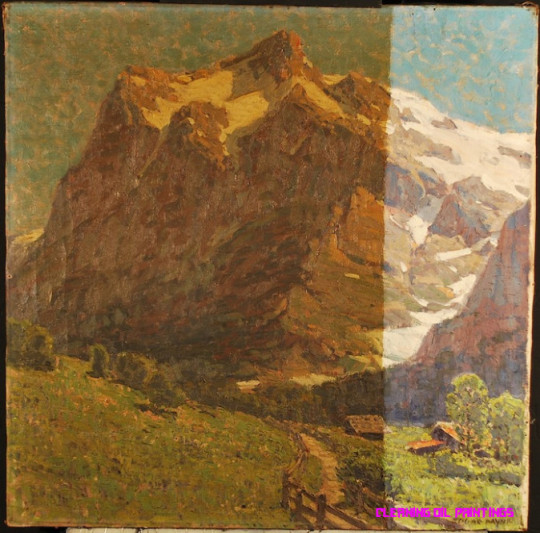
Restoration of Paintings and Art Conservation In Our Lab: Can I .. | cleaning oil paintings
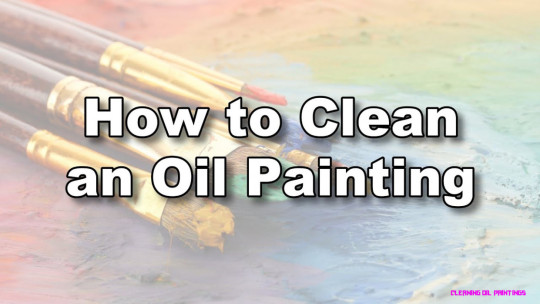
how to clean wash oil painting – YouTube – cleaning oil paintings | cleaning oil paintings
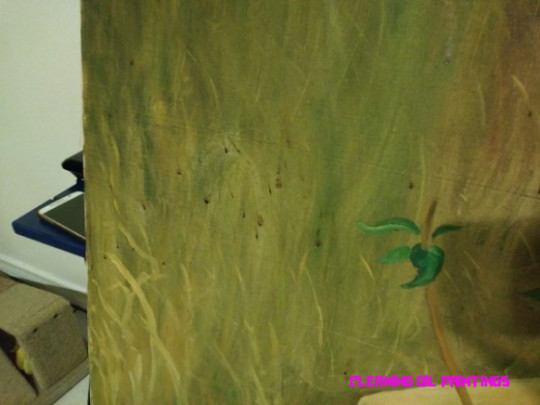
Cleaning Oil Paintings | ThriftyFun – cleaning oil paintings | cleaning oil paintings

Ink Stains: Cleaning an Oil Painting – cleaning oil paintings | cleaning oil paintings

Digital Oil Painting of the Lee Bay Post Office by Charles W. Bailey, Jr | cleaning oil paintings
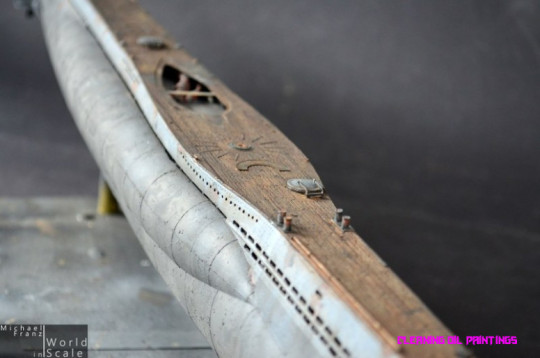
The Ship Model Forum • View topic – U-Boat Type VII/C – 1 .. | cleaning oil paintings

How to clean an oil painting on panel – Fine Art Restoration Company – cleaning oil paintings | cleaning oil paintings

Tips and Tricks on Cleaning Oil Paintings | Oil Paintings for Sale .. | cleaning oil paintings
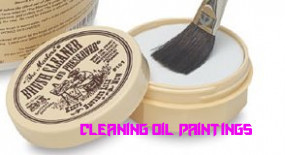
Beginner Oil: Paintbrush care | Artists Network – cleaning oil paintings | cleaning oil paintings
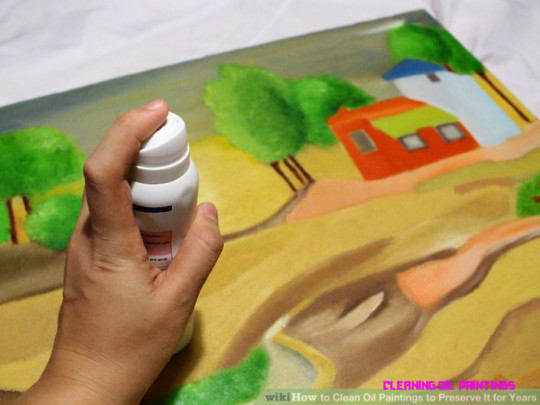
How to Clean Oil Paintings to Preserve It for Years: 13 Steps – cleaning oil paintings | cleaning oil paintings
Painter Legend https://i1.wp.com/www.painterlegend.com/wp-content/uploads/2020/06/professional-oil-painting-cleaner-buy-cleaning-kit-online-cleaning-oil-paintings.jpg?fit=1862%2C767&ssl=1
0 notes
Text
Fashion Fair Cosmetics, once queen of black beauty, is planning a comeback — but it will have to face Rihanna, rivals and social media realities
Growing up in Trinidad in the '80s, Patrice Grell Yursik remembers her mother smoothing on Fashion Fair face powder and popping the pink compact into her purse before leaving for work. Sometimes, she organized her mom's collection of pink-lidded Fashion…
Fashion Fair Cosmetics, once queen of black beauty, is planning a comeback — but it will have to face Rihanna, rivals and social media realities
0 notes
Text
The YouTubers Who Changed the Landscape for #NaturalHair
“Oh, you are gonna want to do jojoba and sweet almond oil instead of castor,” Whitney White, one of YouTube’s most famous black beauty vloggers, told me over the phone last month. The changing of the seasons was making my hair flake a bit and the castor oil I’d been massaging into my scalp was weighing my hair down. “Add in some aloe,” she says. It was a revelation.
Collier Meyerson is an Ideas contributor at WIRED. She was awarded an Emmy for her work on MSNBC’s All In With Chris Hayes and two awards for her reporting from the National Association of Black Journalists. She is a contributing editor at New York magazine and maintains the Nobler Fellowship at the Nation Institute.
As a young child, the bath was my least favorite time of day because I knew what was coming next: getting my hair combed out. My mother would plop me in front of Jeopardy!, lather a popular pink lotion in my hair, and start in on detangling my tight curls with a wide-toothed comb. When I’d sit down in front of her, she’d say, “I’m ready to fight,” addressing my hair. My mother, who is black, wears her hair naturally and cropped close to her head, but it has a different texture than mine. Each time she combed out my hair, she tried to be gentle at first, but by the end of the show I’d always end up in tears and she’d be calling me tender-headed. “If I even looked at your hair, you’d start crying,” she told me recently about combing my hair. “When you were a toddler I’d cut your hair while you were sleeping so I wouldn’t have to comb it.” How dramatic.
If only my mom had Whitney White, or any of the other massively popular YouTube hair vloggers, to set us up for success. But I was a child of a bygone, pre-internet era.
In 2009, “no one was talking about going natural,” White says. So that year, she started a YouTube channel to chronicle her natural hair journey. “It was a different time back then,” she tells me of the vlogging world. In the 10 years since, she’s amassed more than one million followers and uploaded more than 300 videos about natural black hair, from “I put sweet potato in my natural hair” to “The waterfall french twist.”
Nicole Kimberly Foster, a cultural critic and founder of For Harriet, a blog for black women, notes the social aspect of vlogging.“The [vloggers] did it in a way where you felt like they’re your friends,” she says. Foster, who called the relationship between viewer and vlogger “parasocial,” says people watching the YouTube videos were also “latching onto the likability and accessibility” of the vloggers, thinking of them as “your hair sisters.”
“I liken the natural hair movement of the 2000s to a religious revival,” says Lori Tharps, professor of journalism at Temple University and coauthor of Hair Story: Untangling the Roots of Black Hair in America. And the women who led this natural hair revival would emerge as some of our first social media influencers. Another of the original natural hair YouTube stars, Francheska Medina, agrees: “We changed the landscape.”
youtube
In 2009, YouTube was starting to become the behemoth we know today. According to The Atlantic, during that year the video-sharing site expanded its ads to seven different formats, signed a partnership with Disney, promoted video launches, and hit more than 1 billion hits per day. It was also the beginning of an explosive beauty tutorial scene—including a market geared toward people with natural black hair.
According to CNBC, US-based companies are actually missing out on cornering the black hair market. “Most hair care products purchased by African-Americans are imported from countries such as India and China, despite the US having one of the most lucrative hair care markets in the world,” CNBC says. But with the rise of black hair vloggers roughly a decade ago, a new market emerged.
There is Patrice Grell Yursik, who goes by Afrobella and has been called the “godmother of brown beauty,” and Tamara Floyd, whose Twitter profile says “O.G. Natural Hair Blogger 2008.” They were among the first natural hair vloggers and bloggers, and both of them are still active in the beauty and natural hair communities. In 2011, Afrobella partnered with MAC Cosmetics and released “All Of My Purple Life,” a lipglass she created; Floyd still runs an incredibly thorough natural hair information website called Natural Hair Rules.
“It’s just hair, but it’s more than that. Every culture has held meaning in hair.”
Whitney White
White says she was inspired to start vlogging after she realized her hair texture was different from what she’d expected once she went natural. “I was expecting my hair to have afro texture,” like most of the other vloggers she was following, “so when my hair came out and it was in an in-between texture consisting of small, tight coils and kinks,” she wasn’t sure how to style it. “I might as well share what I’m learning since I wasn’t seeing the same hair texture as me,” she says. Her first video, entitled “My Natural Hair Journey,” took viewers from her early childhood to the then-present (2009), when she began growing out her natural hair. A content creator named Jouelzy also felt there was a void to fill. “There wasn’t a lot of people [talking about and styling] my hair texture [on YouTube] and so I started doing natural hair videos,” she says. Reviewing wigs was also a big part of Jouelzy’s practice, she tells me.
This group of intrepid hair vloggers brought much more awareness to the many textures of black hair and, alongside it, an entire cottage industry that explains what those textures are, and how to take care of them and style them. The internet taught me that there is a spectrum of textures that go from 1A, which is straight, to 4C, which is coily; it is common for people to be in between different textures, too. These classifications came from a hair typing system created by Oprah’s hair stylist of 25 years, Andre Walker. He tells me the internet is “why [my chart] spread.” (The chart first appeared in his book Andre Talks Hair!)
The internet catalyzed the natural hair boom of the mid 2000s, driving a different cultural moment than natural hair movements that came before.
Of course, black women have been wearing our hair natural since the dawn of time. But a major change happened in the 1800s, when the hot comb—a literal comb heated on an oven—was invented. Women used this device for years (and the straight iron persists as a continuation of the concept), but as beauty products became a commercialized enterprise, Tharps points out, the offensive ways companies advertised to black women began to reach a boiling point. “Black women were tired of being treated like dirt with marketing and sales campaigns that made women feel like they were destined to fail, or that they were animalistic,” she says. That’s why one of America’s first black millionaires, Madam CJ Walker, knew she had a market by creating her own line of hair care products for black women—including salve for hair growth—at the turn of the 20th century. George Johnson, of Ultra Sheen and Afro Sheen fame, would follow in Walker’s footsteps in the 1950s by starting his own hair care line, Johnson Products, that would eventually be one of the first black-owned companies to be listed on the stock exchange.
Then, during the black power movement of the ’60s and ’70s, natural hair became a front-and-center statement. As Tharps points out, black women of that time (and since) carried the burden of needing to outwardly politicize their beauty, as opposed to white women who have the luxury of styling or cutting their hair in ways that will never be interpreted as activism. When my mother was growing up in Philadelphia in the ’50s, she used, like many of her peers, a hot comb on her hair to make it straight. It wasn’t until right after she graduated from college in the mid ‘60s that she decided to go natural. Her best friend encouraged her to perm. “I was so disgusted with the cost of upkeep that I shaved my head totally bald,” she says. She hasn’t changed it since. My mother says her decision was never a political one, but a maintenance one. She simply didn’t care for upkeep.
“Whereas in the ‘60s and ‘70s men and women were using their hair as a political statement, the natural hair movement of the aughts is about beauty.”
Lori Tharps, professor of journalism at Temple University
This history is what makes the recent natural hair movement—and the vloggers who ushered it in—so notable. “Whereas in the ‘60s and ‘70s men and women were using their hair as a political statement, the natural hair movement of the aughts is about beauty,” Tharps says. “It really was revolutionary to see twist outs, dreadlocks, and braids without people necessarily trying to make a statement.” This is why, Tharps says, “For black women to have a movement around beauty is revolutionary.”
While the “hair girls,” as Medina lovingly calls them, of the aughts were hugely instrumental in spreading information about styles and hair care, they certainly were not the first to use the internet to share knowledge. In the early days, “there were a lot of hair forums,” she says, adding that threads were categorized based on what information you were looking for. Then, “Twitter came in the game” and changed everything. “It was a faster way to get the information you needed,” she says. Medina spent whole days fielding and answering questions. Pop culture was also an influence, says Whitney White. “The natural hair community was definitely inspired by musicians such as India.Arie, Lauryn Hill, Erykah Badu.”
Tumblr was an important part of the robust natural hair dialog. The microblogging website was a space where users began to engage and share inspirational images and blog posts about natural hair. “We all carved out our lanes,” Medina says. “Mine was focused on health,” because, she says, her hair had fallen out after an illness.
“Even on the street they call us the OG internet girls,” says Medina. “We kicked it off in terms of the natural hair boom.” The YouTube natural hair explosion hit amid influencer culture. The OGs were making money. Then in 2013, she says, “we all signed to Maker Studios” a once-famous multi-channel network. “It was a big deal.”
The popularity of hair tutorials, and vlogging more broadly, indicated to companies that there was money to be made—and the YouTubers were a big part of that monetization, Tharps says. Medina agrees. “The brands started taking over [the YouTube] space and paying $10,000 to $50,000, money I never saw in my life,” she says about the 7-minute videos she created. “It just really changed the game.” After Medina began monetizing her videos, she put much more work into them. “It upped the stakes,” she says. “You wanted your cam to be better and you’re learning Final Cut Pro because you want the editing to be better,” she says, adding to those skills a fluency in Adobe and purchasing a DLSR. “I invested in camera equipment and said I was going to do natural hair videos that make 4C hair look beautiful,” says Jouelzy, comparing her approach to other tutorials she had seen.
But there was, as Jouelzy wrote in a piece for Ebony (and in a video that she has taken down from public view on YouTube), a lamentable side of the natural hair community: texture discrimination. “The [natural hair community] continues to promote the idea that healthy natural hair is curly, it’s shiny, it’s laid full of baby hairs and that that’s the pinnacle for what healthy, natural hair should look like. That leaves such a large audience of women out who are natural who might feel like they’re doing something wrong with their hair because their hair doesn’t look like what’s being represented in the natural hair community,” she says in her video. “It’s not just about skin color,” Jouelzy tells me. “It is about a European spectrum of beauty.” Foster agreed, adding, “We equate light skin to having curly hair, finer hair, slimmer features, smaller features. And that’s not always the way that it plays out.”
“It was a specific type of natural that was getting the attention,” Medina says, adding that she was always mindful of these issues and found it was “a lot to reconcile, especially as the space got bigger in terms of who was getting the fame and financial stability.”
One of the benefits, Foster says, of this “growing cadre of influencers, public intellectuals, bloggers, and tweeters” is that an opportunity has opened up to “cut deeper to get to some of those layers that we’ve just kind of been glossing over” when it comes to blackness and beauty. “There’s still a lot to be done, but I do think the conversation is happening a lot more now,” she says, adding that we are seeing more representation. The conversation is ongoing, but simply continuing to have a public discourse about the issues of texture discrimination in hair care and beauty is a vital step in pushing representation forward.
And more representation went beyond our computer screens. “Products started out as mail orders, and eventually were on Target shelves,” says Tharp. One black hair blogger, Leila Noelliste, opened her own store in the Bedford-Stuyvesant section of Brooklyn. Seeing “top-of-the-line, luxurious, beautifully scented, colorful, and indulgent” natural hair products geared toward black women in retail stores “cemented this natural hair movement that continuously grows and expands,” Tharps says. “Black women can be as indulgent as white women when it comes to choosing products, so much so that women who aren’t black are enticed.”
SUBSCRIBE
Subscribe to WIRED and stay smart with more of your favorite Ideas writers.
The OG hair girls who helped launch this retail and cultural success further capitalized on it. “People have their own hair care lines now,” says Medina. Her friend and major vlogger Franchesca Ramsey, known as Chescaleigh, wrote a book and catapulted into the TV world and now has her own show on MTV. Medina has a podcast, The Friend Zone, and also hosts a podcast about the HBO show Insecure called Insecuritea. “It’s interesting,” Medina says, “to see how that propelled our careers just by talking about our hair.” Jouelzy, for her part, weaves history into her cultural commentary on YouTube and is planning to apply for a PhD in history.
As for the natural hair movement of the mid-aughts, it has sort of “plateaued,” says Medina. Though there is still a very active natural hair community, makeup has become a significant draw on YouTube (you only have to look at how much media attention the James Charles fracas received). “I felt the natural hair community was limiting because there’s only so many people who can watch those videos,” says beauty blogger Alyssa Forever, who has more than 1.3 million subscribers to her YouTube channel. “I want all people to watch, not just people with certain hair texture as me,” she says. “Makeup and beauty is so diverse.” Jouelzy notes that makeup tutorials have been around since the beginning, but because of the money poured into YouTube, vloggers now enjoy a different level of success. “There will always be a need for women to talk about natural hair and celebrate natural hair as long as white supremacy is a thing,” Foster says, agreeing that the community has expanded to include Instagram and makeup.
But, for those who are still in the natural hair game like Whitney White—who also does beauty vlogging—hair denotes something about the self. “It’s just hair but it’s more than that. Every culture has held meaning in hair. It’s an identifier and gives a lot of people a lot of pride,” White says. “When you feel better about your hair you have a better day. Once we were comfortable about our hair, once we were finally loving our hair in whatever way we choose to wear it, it opened the doors to loving other things as well.”
More Great WIRED Stories
The post The YouTubers Who Changed the Landscape for #NaturalHair appeared first on Gyrlversion.
from WordPress http://www.gyrlversion.net/the-youtubers-who-changed-the-landscape-for-naturalhair/
0 notes
Photo

New Post has been published on https://shortlongforhairstylesz.com/curly-natural-hair/
Curly Natural Hair
Curly Natural Hair – Calling All Curls Curly Hair How Hush Salon. Brie also kicked off process defining separating out each natural curl gentle rinse cold water best don worry about getting all conditioner curly hair thrives right kind product including little leftover.
Natural black hair naturally curly. Are you thinking about wearing your natural black hair here place start journey naturally curly.
Below are the list of best pictures collection of curly natural hair photo in high resolution.
Top 10 Curly Natural Hair Ideas
1. Patrice Grell Yursik Natural Curls Errol Dunlap
2. Naturally Curly Hair Long Natural Pictures
3. Tammy Goodson Curlychics
4. Going Natural Methods
5. Black Women Curly Nikki Natural Hair Styles Care
6. Asymmetric Curls Light Brown Highlights Parted Side Bangs
7. Curlyhair
8. Loving Naturally Curly Hair Flip Flop Between Press Natural
9. Searching For Natural Curly Haired Models
10. Curlynikki Lead
0 notes
Text
23 incredible black women whose words of wisdom you need to hear.
Trust and listen to black women. This bears repeating: Trust and listen to black women.
We have not steered you wrong yet.
We built this country with grit and grace. We are smart. We are accomplished. We are talented beyond measure. We’re leading start-ups and business empires. We’re changing narratives. We’re making art. We’re making a difference. And yet, we are left behind, ignored, and underrepresented time and time again.
But that pattern ends today. It’s time to start listening.
Here’s the three-step process for listening to black women:
Listen to what black women have to say.
Share what they say with your networks while giving them full credit.
Repeat steps 1 and 2 forever and ever.
It sounds easy. Most of you are doing it already. But in a society that’s quick to ignore or minimize the contributions of black women, it’s vital that we continue to listen and make room for their voices to be heard.
Short on black voices in your life? Start with Twitter.
Here are 23 writers, educators, artists, lawyers, politicians, actors, advocates, dreamers, do-ers, and visionaries to follow, read, listen to, and signal-boost.
1. Blair Imani @BlairImani
The voice of this black American Muslim activist is even more necessary in the wake of bigoted and shortsighted policies from the White House.
This is the America I’m proud to be a part of. #NoBanNoWall #JFKTerminal4 #NoMuslimRegistry #NoMuslimBan http://pic.twitter.com/uSYOSmaqLd
Blair Imani (@BlairImani) January 29, 2017
2. Symone D. Sanders @SymoneDSanders
She’s a political commentator on CNN and former press secretary for Bernie Sanders (no relation).
Does Sean Spicer remember he was the Comms Dir for the GOP when they blatantly opposed everything Pres. Obama wanted to do? No? Oh…ok.
Symone D. Sanders (@SymoneDSanders) January 30, 2017
3. Nell Painter @PainterNell
Painter is a scholar, author, historian, and artist. (Yes, Nell Painter’s a painter.)
In these times, in this month, Americans should heed the civil rights movement of the 1950s-1960s to combat white supremacist terrorism.
Nell Painter (@PainterNell) February 1, 2017
4. La’Tasha D. Mayes @duxfemfac
She’s a kickass reproductive justice activist and one to follow if you care about your body and what you’re allowed to do with it.
#Ohio, your state legislature wants to ban abortion at 6 weeks. Call #JohnKasich @ 614.466.3555 to veto the bill! #ReproJustice #StoptheBans http://pic.twitter.com/AGMZVYLQUB
La’Tasha D. Mayes (@duxfemfac) December 7, 2016
5. The Kitchenista @MissAngelaDavis
Miss Angela Davis, aka The Kitchenista, is a private chef, food blogger, and creator of seriously mouthwatering recipes.
Smoked gouda & chive buttermilk biscuits happened for brunch…#kitchenistasundays http://pic.twitter.com/AOz6JD4daJ
The Kitchenista (@MissAngelaDavis) February 5, 2017
6. Tressie McMillan Cottom, Ph.D. @tressiemcphd
Tressie Mc is a professor, sociologist, and expert on the high cost of for-profit colleges.
I like all the dudes assuming i don’t know who elon musk is. LOL i may get his name confused with drugstore cologne but like i’m also a PhD
Tressie Mc (@tressiemcphd) February 4, 2017
7. April Reign @ReignOfApril
Reign is the managing editor of Broadway Black and the woman behind the hashtag #OscarsSoWhite.
I miss him too. #Bigly. But y’all gotta stop calling on Obama & start calling (literally) your Congresspeople who can actually DO something.
April (@ReignOfApril) January 31, 2017
8. Elaine Welteroth @ElaineWelteroth
She’s the editor of Teen Vogue and the guiding voice behind their sweeping shift toward the inclusive and political.
Whoa. Just had a dream that I was helping Sasha Obama with a speech…for @TeenVogue ?! Let’s hope it’s a premonition.
Elaine Welteroth (@ElaineWelteroth) February 6, 2017
9. Chirlane McCray @NYCFirstLady
In addition to being the first lady of New York City, McCray is a writer, activist, and mental health advocate.
This week, I joined @NYPDONeill to announce a new hotline and more trained officers to combat sex trafficking in NYC. http://pic.twitter.com/2XLb3lGbV6
Chirlane McCray (@NYCFirstLady) February 3, 2017
10. Bree Newsome @BreeNewsome
She’s a writer, filmmaker, and activist best known for taking the Confederate flag down from in front of the South Carolina state capitol.
Wonderful to be a part of #unitedblackworldmonth @OhioState. Thank you for warm reception http://bit.ly/2oDC0HW
Bree Newsome (@BreeNewsome) February 3, 2017
11. Angelica Ross @angelicaross
Ross is a transgender actress and founder of TransTech Social Enterprises, a training, economic development, and employment program for transgender and gender nonconforming people.
I DARE someone give me a camera crew to travel America talking to Black Churches & the LGBTQ “Children of God” they tossed on the streets.
Angelica Ross (@angelicaross) January 1, 2017
12. Patrice Grell Yursik @afrobella
Yursik writes on black beauty and hair along with fashion and culture for her popular website, Afrobella. She’s also contributed to Ebony, Essence, and Newsweek.
Black Women, Hair, and Exercise. Tips From the Pros http://bit.ly/2oKE7GH via @afrobella
afrobella (@afrobella) January 28, 2017
13. Wagatwe Wanjuki @wagatwe
A former Upworthy writer, Wanjuki now writes for Daily Kos and is a fierce activist, dedicated to eliminating rape and gender-based violence.
I don’t see any Oscar nominations for rapist Nate Parker.
Good.#pettyblackfeminist
Wagatwe Wanjuki (@wagatwe) January 24, 2017
14. DNLee @DNLee5
DNLee is a mammalogist, writer, and new professor. She blogs for Scientific American.
Hi, I’m DNLee I study behavior & natural history of small mammals across urban gradients. #actuallivingscientist #womeninscience http://pic.twitter.com/UCPQJbqa6x
DNLee (@DNLee5) February 3, 2017
15. Kashana Cauley @kashanacauley
Cauley is a writer and humorist who was recently joined the writing staff of “The Daily Show.”
*sneaks into the White House*
*blasts “Who Will Save Your Soul” on repeat*
Kashana (@kashanacauley) January 28, 2017
16. Dorothy Charles @dn_charles
Charles is the multiracial medical student behind #WhiteCoats4BlackLives.
How am I, a black woman, supposed to trust a doctor who is ambivalent about whether or not police are justified in shooting folks like me?
Dorothy N. Charles (@dn_charles) February 4, 2017
17. Ijeoma Oluo @IjemoaOluo
She’s an amazing writer, critic, and editor-at-large for The Establishment.
I love muting trolls. I love knowing they are so angered by what I’m saying they have to seek me out 2 try 2 silence me & they are silenced
Ijeoma Oluo (@IjeomaOluo) January 31, 2017
18. Vilissa Thompson @VilissaThompson
She’s the founder of Ramp Your Voice, a self-advocacy and empowerment movement for people with disabilities. She also created the hashtag #DisabilityTooWhite.
To ask me to separate my Black womanness from who I am for the cause (disability rights) is disrespectful- you are silencing my voice & life
Vilissa Thompson (@VilissaThompson) January 30, 2017
19. Imani Gandy @AngryBlackLady
Gandy is an attorney turned journalist and activist. She is the senior legal analyst at Rewire and co-host of This Week In Blackness’ flagship podcast #TWIBPrime.
I think as progressive journalists we should commit to using the term “religious imposition.”
It’s not about freedom.
Imani Gandy (@AngryBlackLady) February 2, 2017
20. Danyel Smith @danamo
Smith is the former editor-in-chief of Vibe magazine and the senior culture editor for ESPN’s The Undefeated, a new digital initiative.
“The way he plays the guitar, its like the guitar must have been his friend. http://bit.ly/2oKE91h
Danyel Smith (@danamo) February 2, 2017
21. Nalo Hopkinson @Nalo_Hopkinson
Hopkinson is a fantasy and science fiction writer whose work you definitely need to add to your reading list.
Never considered before how creepy it can be to quote something an author’s characters said and attribute it to the author. #writerslife
Nalo Hopkinson (@Nalo_Hopkinson) January 28, 2017
22. Rep. Maxine Waters @MaxineWaters
For over two decades, she’s represented California’s 43rd District in the House of Representatives. Now, she’s leading the resistance in Congress.
My response to questions I’ve received about @realDonaldTrump & impeachment. In my estimation, he’s leading himself to impeachment. http://pic.twitter.com/SByVtlxltT
Maxine Waters (@MaxineWaters) February 6, 2017
23. Marley Dias @iammarleydias
You may recall Dias’ effort to collect 1,000 books about black girls. Now this 12-year-old has a book deal of her own!
Still sad that there is no woman quarterback emojiWe have but no Q.B.
Marley Emerson Dias (@iammarleydias) February 4, 2017
The best part? This is only the beginning.
It was nearly impossible to curate this list down to 23. I left off some pretty big names in favor of some lesser-known women doing big things in their fields. That’s why I pulled all of these accounts and even more you should follow into a Twitter list. When it comes to black women, there is no shortage of awesome.
We are out here.
In every walk of life. In every career. Every state and every country. We are out here. Listen to our lived experiences. Fund our research. Buy tickets to our performances. Hear our lectures. Subscribe to our channels and podcasts. Cook our recipes. But first and foremost listen. Just listen.
Read more: http://u.pw/2oDCLQX
from 23 incredible black women whose words of wisdom you need to hear.
1 note
·
View note
Text
TED Talks | Empowering Women
em·pow·er
verb \im-ˈpau̇(-ə)r\
: to give power to (someone)
: to promote the self-actualization or influence of
In honor of Women’s History Month here are some of my favorite TED Talks on female empowerment. I hope you allow the voices of these phenomenal women to educate, uplift, and inspire you.
1. Leymah Gbowee: Unlock the intelligence, passion, greatness of girls
Nobel Peace Prize winner Leymah Gbowee has two powerful stories to tell — of her own life’s transformation, and of the untapped potential of girls around the world. Can we transform the world by unlocking the greatness of girls? (via Ted.com)
youtube
2. We should all be feminists: Chimamanda Ngozi Adichie at TEDxEuston
“We teach girls shame. “Close your legs. Cover yourself.” We make them feel as though being born female they’re already guilty of something. And so, girls grow up to be women who cannot say they have desire. They grow up to be women who silence themselves. They grow up to be women who cannot say what they truly think. And they grow up — and this is the worst thing we do to girls — they grow up to be women who have turned pretense into an art form.” (excerpt from talk)
youtube
3. Manal al-Sharif: A Saudi woman who dared to drive
There’s no actual law against women driving in Saudi Arabia. But it’s forbidden. Two years ago, Manal al-Sharif decided to encourage women to drive by doing so — and filming herself for YouTube. Hear her story of what happened next. (via Ted.com)
youtube
4. Kakenya Ntaiya: A girl who demanded school
Kakenya Ntaiya made a deal with her father: She would undergo the traditional Maasai rite of passage of female circumcision if he would let her go to high school. Ntaiya tells the fearless story of continuing on to college, and of working with her village elders to build a school for girls in her community. It’s the educational journey of one that altered the destiny of 125 young women. (Filmed at TEDxMidAtlantic.) (via Ted.com)
youtube
5. Make Your Own Runway, Define Your Own Beauty | Patrice (Afrobella) Grell Yursik at TEDxPortofSpain
Patrice Grell Yursik is the founder of Afrobella®. According to some, she's the Godmother of Brown Beauty Blogging. Trinidadian-born writer Patrice Grell Yursik created Afrobella.com in 2006, to fill a void and to celebrate the inner and outer beauty of women all shades of beautiful. Her popular, award-winning blog shines a loving light on natural hair and the wonderfully wide range of gorgeous skin tones and sizes women come in.
youtube
0 notes
Text
23 incredible black women whose words of wisdom you need to hear.
<br>
Trust and listen to black women. This bears repeating: Trust and listen to black women.
We have not steered you wrong yet.
We built this country with grit and grace. We are smart. We are accomplished. We are talented beyond measure. We're leading start-ups and business empires. We're changing narratives. We're making art. We're making a difference. And yet, we are left behind, ignored, and underrepresented time and time again.
Yes, "Hidden Figures" is winning awards, but not before the real women that the movie was based on were summarily erased from history for over 50 years. Photo by Robyn Beck/AFP/Getty Images.
But that pattern ends today. It's time to start listening.
Here's the three-step process for listening to black women:
Listen to what black women have to say.
Share what they say with your networks while giving them full credit.
Repeat steps 1 and 2 forever and ever.
It sounds easy. Most of you are doing it already. But in a society that's quick to ignore or minimize the contributions of black women, it's vital that we continue to listen and make room for their voices to be heard.
Photo by Spencer Platt/Getty Images.
Short on black voices in your life? Start with Twitter.
Here are 23 writers, educators, artists, lawyers, politicians, actors, advocates, dreamers, do-ers, and visionaries to follow, read, listen to, and signal-boost.
1. Blair Imani — @BlairImani
The voice of this black American Muslim activist is even more necessary in the wake of bigoted and shortsighted policies from the White House.
This is the America I'm proud to be a part of. #NoBanNoWall #JFKTerminal4 #NoMuslimRegistry #NoMuslimBan http://pic.twitter.com/uSYOSmaqLd
— Blair Imani (@BlairImani) January 29, 2017
2. Symone D. Sanders — @SymoneDSanders
She's a political commentator on CNN and former press secretary for Bernie Sanders (no relation).
Does Sean Spicer remember he was the Comms Dir for the GOP when they blatantly opposed everything Pres. Obama wanted to do? No? Oh...ok.
— Symone D. Sanders (@SymoneDSanders) January 30, 2017
3. Nell Painter — @PainterNell
Painter is a scholar, author, historian, and artist. (Yes, Nell Painter's a painter.)
In these times, in this month, Americans should heed the civil rights movement of the 1950s-1960s to combat white supremacist terrorism.
— Nell Painter (@PainterNell) February 1, 2017
4. La'Tasha D. Mayes — @duxfemfac
She's a kickass reproductive justice activist and one to follow if you care about your body and what you're allowed to do with it.
#Ohio, your state legislature wants to ban abortion at 6 weeks. Call #JohnKasich @ 614.466.3555 to veto the bill! #ReproJustice #StoptheBans http://pic.twitter.com/AGMZVYLQUB
— La'Tasha D. Mayes (@duxfemfac) December 7, 2016
5. The Kitchenista — @MissAngelaDavis
Miss Angela Davis, aka The Kitchenista, is a private chef, food blogger, and creator of seriously mouthwatering recipes.
Smoked gouda & chive buttermilk biscuits happened for brunch...#kitchenistasundays http://pic.twitter.com/AOz6JD4daJ
— The Kitchenista (@MissAngelaDavis) February 5, 2017
6. Tressie McMillan Cottom, Ph.D. — @tressiemcphd
Tressie Mc is a professor, sociologist, and expert on the high cost of for-profit colleges.
I like all the dudes assuming i don't know who elon musk is. LOL i may get his name confused with drugstore cologne but like i'm also a PhD
— Tressie Mc (@tressiemcphd) February 4, 2017
7. April Reign — @ReignOfApril
Reign is the managing editor of Broadway Black and the woman behind the hashtag #OscarsSoWhite.
I miss him too. #Bigly. But y'all gotta stop calling on Obama & start calling (literally) your Congresspeople who can actually DO something.
— April (@ReignOfApril) January 31, 2017
8. Elaine Welteroth — @ElaineWelteroth
She's the editor of Teen Vogue and the guiding voice behind their sweeping shift toward the inclusive and political.
Whoa. Just had a dream that I was helping Sasha Obama with a speech...for @TeenVogue ?! 🤔Let's hope it's a premonition.
— Elaine Welteroth (@ElaineWelteroth) February 6, 2017
9. Chirlane McCray — @NYCFirstLady
In addition to being the first lady of New York City, McCray is a writer, activist, and mental health advocate.
This week, I joined @NYPDONeill to announce a new hotline and more trained officers to combat sex trafficking in NYC. http://pic.twitter.com/2XLb3lGbV6
— Chirlane McCray (@NYCFirstLady) February 3, 2017
10. Bree Newsome — @BreeNewsome
She's a writer, filmmaker, and activist best known for taking the Confederate flag down from in front of the South Carolina state capitol.
Wonderful to be a part of #unitedblackworldmonth @OhioState. Thank you for warm reception 😊🙏🏾❤️ https://t.co/Gyu3KO13G6
— Bree Newsome (@BreeNewsome) February 3, 2017
11. Angelica Ross — @angelicaross
Ross is a transgender actress and founder of TransTech Social Enterprises, a training, economic development, and employment program for transgender and gender nonconforming people.
I DARE someone give me a camera crew to travel America talking to Black Churches & the LGBTQ "Children of God" they tossed on the streets.
— Angelica Ross (@angelicaross) January 1, 2017
12. Patrice Grell Yursik — @afrobella
Yursik writes on black beauty and hair along with fashion and culture for her popular website, Afrobella. She's also contributed to Ebony, Essence, and Newsweek.
Black Women, Hair, and Exercise. Tips From the Pros https://t.co/lzJeItZTpq via @afrobella
— afrobella (@afrobella) January 28, 2017
13. Wagatwe Wanjuki — @wagatwe
A former Upworthy writer, Wanjuki now writes for Daily Kos and is a fierce activist, dedicated to eliminating rape and gender-based violence.
I don't see any Oscar nominations for rapist Nate Parker.
Good.#pettyblackfeminist
— Wagatwe Wanjuki (@wagatwe) January 24, 2017
14. DNLee —@DNLee5
DNLee is a mammalogist, writer, and new professor. She blogs for Scientific American.
Hi, I'm DNLee I study behavior & natural history of small mammals across urban gradients. #actuallivingscientist #womeninscience http://pic.twitter.com/UCPQJbqa6x
— DNLee (@DNLee5) February 3, 2017
15. Kashana Cauley — @kashanacauley
Cauley is a writer and humorist who was recently joined the writing staff of "The Daily Show."
*sneaks into the White House*
*blasts "Who Will Save Your Soul" on repeat*
— Kashana (@kashanacauley) January 28, 2017
16. Dorothy Charles — @dn_charles
Charles is the multiracial medical student behind #WhiteCoats4BlackLives.
How am I, a black woman, supposed to trust a doctor who is ambivalent about whether or not police are justified in shooting folks like me?
— Dorothy N. Charles (@dn_charles) February 4, 2017
17. Ijeoma Oluo — @IjemoaOluo
She's an amazing writer, critic, and editor-at-large for The Establishment.
I love muting trolls. I love knowing they are so angered by what I'm saying they have to seek me out 2 try 2 silence me & they are silenced
— Ijeoma Oluo (@IjeomaOluo) January 31, 2017
18. Vilissa Thompson — @VilissaThompson
She's the founder of Ramp Your Voice, a self-advocacy and empowerment movement for people with disabilities. She also created the hashtag #DisabilityTooWhite.
To ask me to separate my Black womanness from who I am for the cause (disability rights) is disrespectful- you are silencing my voice & life
— Vilissa Thompson (@VilissaThompson) January 30, 2017
19. Imani Gandy — @AngryBlackLady
Gandy is an attorney turned journalist and activist. She is the senior legal analyst at Rewire and co-host of This Week In Blackness' flagship podcast #TWIBPrime.
I think as progressive journalists we should commit to using the term "religious imposition."
It's not about freedom.
— Imani Gandy (@AngryBlackLady) February 2, 2017
20. Danyel Smith — @danamo
Smith is the former editor-in-chief of Vibe magazine and the senior culture editor for ESPN's The Undefeated, a new digital initiative.
"The way he plays the guitar, it’s like the guitar must have been his friend.” https://t.co/02S8YNEw1P
— Danyel Smith (@danamo) February 2, 2017
21. Nalo Hopkinson — @Nalo_Hopkinson
Hopkinson is a fantasy and science fiction writer whose work you definitely need to add to your reading list.
Never considered before how creepy it can be to quote something an author's characters said and attribute it to the author. #writerslife
— Nalo Hopkinson (@Nalo_Hopkinson) January 28, 2017
22. Rep. Maxine Waters — @MaxineWaters
For over two decades, she's represented California's 43rd District in the House of Representatives. Now, she's leading the resistance in Congress.
My response to questions I've received about @realDonaldTrump & impeachment. In my estimation, he's leading himself to impeachment. http://pic.twitter.com/SByVtlxltT
— Maxine Waters (@MaxineWaters) February 6, 2017
23. Marley Dias — @iammarleydias
You may recall Dias' effort to collect 1,000 books about black girls. Now this 12-year-old has a book deal of her own!
Still sad that there is no woman quarterback emoji😭We have 🏋🏾♀️🤼♀️🤸🏾♀️⛹🏾♀️🤾🏾♀️🏌🏾♀️🏄🏾♀️🏊🏾♀️🤽🏾♀️🚣🏾♀️🏇🏾🚴🏾♀️🚵🏾♀️🤹🏾♀️ but no Q.B.
— Marley Emerson Dias (@iammarleydias) February 4, 2017
The best part? This is only the beginning.
It was nearly impossible to curate this list down to 23. I left off some pretty big names in favor of some lesser-known women doing big things in their fields. That's why I pulled all of these accounts and even more you should follow into a Twitter list. When it comes to black women, there is no shortage of awesome.
Photo by Saul Loeb/AFP/Getty Images.
We are out here.
In every walk of life. In every career. Every state and every country. We are out here. Listen to our lived experiences. Fund our research. Buy tickets to our performances. Hear our lectures. Subscribe to our channels and podcasts. Cook our recipes. But first and foremost listen. Just listen.
<br>
Here's that Twitter list again. I'll be updating it often.
0 notes
Text
23 incredible black women whose words of wisdom you need to hear.
<br>
Trust and listen to black women. This bears repeating: Trust and listen to black women.
We have not steered you wrong yet.
We built this country with grit and grace. We are smart. We are accomplished. We are talented beyond measure. We're leading start-ups and business empires. We're changing narratives. We're making art. We're making a difference. And yet, we are left behind, ignored, and underrepresented time and time again.
Yes, "Hidden Figures" is winning awards, but not before the real women that the movie was based on were summarily erased from history for over 50 years. Photo by Robyn Beck/AFP/Getty Images.
But that pattern ends today. It's time to start listening.
Here's the three-step process for listening to black women:
Listen to what black women have to say.
Share what they say with your networks while giving them full credit.
Repeat steps 1 and 2 forever and ever.
It sounds easy. Most of you are doing it already. But in a society that's quick to ignore or minimize the contributions of black women, it's vital that we continue to listen and make room for their voices to be heard.
Photo by Spencer Platt/Getty Images.
Short on black voices in your life? Start with Twitter.
Here are 23 writers, educators, artists, lawyers, politicians, actors, advocates, dreamers, do-ers, and visionaries to follow, read, listen to, and signal-boost.
1. Blair Imani — @BlairImani
The voice of this black American Muslim activist is even more necessary in the wake of bigoted and shortsighted policies from the White House.
This is the America I'm proud to be a part of. #NoBanNoWall #JFKTerminal4 #NoMuslimRegistry #NoMuslimBan http://pic.twitter.com/uSYOSmaqLd
— Blair Imani (@BlairImani) January 29, 2017
2. Symone D. Sanders — @SymoneDSanders
She's a political commentator on CNN and former press secretary for Bernie Sanders (no relation).
Does Sean Spicer remember he was the Comms Dir for the GOP when they blatantly opposed everything Pres. Obama wanted to do? No? Oh...ok.
— Symone D. Sanders (@SymoneDSanders) January 30, 2017
3. Nell Painter — @PainterNell
Painter is a scholar, author, historian, and artist. (Yes, Nell Painter's a painter.)
In these times, in this month, Americans should heed the civil rights movement of the 1950s-1960s to combat white supremacist terrorism.
— Nell Painter (@PainterNell) February 1, 2017
4. La'Tasha D. Mayes — @duxfemfac
She's a kickass reproductive justice activist and one to follow if you care about your body and what you're allowed to do with it.
#Ohio, your state legislature wants to ban abortion at 6 weeks. Call #JohnKasich @ 614.466.3555 to veto the bill! #ReproJustice #StoptheBans http://pic.twitter.com/AGMZVYLQUB
— La'Tasha D. Mayes (@duxfemfac) December 7, 2016
5. The Kitchenista — @MissAngelaDavis
Miss Angela Davis, aka The Kitchenista, is a private chef, food blogger, and creator of seriously mouthwatering recipes.
Smoked gouda & chive buttermilk biscuits happened for brunch...#kitchenistasundays http://pic.twitter.com/AOz6JD4daJ
— The Kitchenista (@MissAngelaDavis) February 5, 2017
6. Tressie McMillan Cottom, Ph.D. — @tressiemcphd
Tressie Mc is a professor, sociologist, and expert on the high cost of for-profit colleges.
I like all the dudes assuming i don't know who elon musk is. LOL i may get his name confused with drugstore cologne but like i'm also a PhD
— Tressie Mc (@tressiemcphd) February 4, 2017
7. April Reign — @ReignOfApril
Reign is the managing editor of Broadway Black and the woman behind the hashtag #OscarsSoWhite.
I miss him too. #Bigly. But y'all gotta stop calling on Obama & start calling (literally) your Congresspeople who can actually DO something.
— April (@ReignOfApril) January 31, 2017
8. Elaine Welteroth — @ElaineWelteroth
She's the editor of Teen Vogue and the guiding voice behind their sweeping shift toward the inclusive and political.
Whoa. Just had a dream that I was helping Sasha Obama with a speech...for @TeenVogue ?! 🤔Let's hope it's a premonition.
— Elaine Welteroth (@ElaineWelteroth) February 6, 2017
9. Chirlane McCray — @NYCFirstLady
In addition to being the first lady of New York City, McCray is a writer, activist, and mental health advocate.
This week, I joined @NYPDONeill to announce a new hotline and more trained officers to combat sex trafficking in NYC. http://pic.twitter.com/2XLb3lGbV6
— Chirlane McCray (@NYCFirstLady) February 3, 2017
10. Bree Newsome — @BreeNewsome
She's a writer, filmmaker, and activist best known for taking the Confederate flag down from in front of the South Carolina state capitol.
Wonderful to be a part of #unitedblackworldmonth @OhioState. Thank you for warm reception 😊🙏🏾❤️ https://t.co/Gyu3KO13G6
— Bree Newsome (@BreeNewsome) February 3, 2017
11. Angelica Ross — @angelicaross
Ross is a transgender actress and founder of TransTech Social Enterprises, a training, economic development, and employment program for transgender and gender nonconforming people.
I DARE someone give me a camera crew to travel America talking to Black Churches & the LGBTQ "Children of God" they tossed on the streets.
— Angelica Ross (@angelicaross) January 1, 2017
12. Patrice Grell Yursik — @afrobella
Yursik writes on black beauty and hair along with fashion and culture for her popular website, Afrobella. She's also contributed to Ebony, Essence, and Newsweek.
Black Women, Hair, and Exercise. Tips From the Pros https://t.co/lzJeItZTpq via @afrobella
— afrobella (@afrobella) January 28, 2017
13. Wagatwe Wanjuki — @wagatwe
A former Upworthy writer, Wanjuki now writes for Daily Kos and is a fierce activist, dedicated to eliminating rape and gender-based violence.
I don't see any Oscar nominations for rapist Nate Parker.
Good.#pettyblackfeminist
— Wagatwe Wanjuki (@wagatwe) January 24, 2017
14. DNLee —@DNLee5
DNLee is a mammalogist, writer, and new professor. She blogs for Scientific American.
Hi, I'm DNLee I study behavior & natural history of small mammals across urban gradients. #actuallivingscientist #womeninscience http://pic.twitter.com/UCPQJbqa6x
— DNLee (@DNLee5) February 3, 2017
15. Kashana Cauley — @kashanacauley
Cauley is a writer and humorist who was recently joined the writing staff of "The Daily Show."
*sneaks into the White House*
*blasts "Who Will Save Your Soul" on repeat*
— Kashana (@kashanacauley) January 28, 2017
16. Dorothy Charles — @dn_charles
Charles is the multiracial medical student behind #WhiteCoats4BlackLives.
How am I, a black woman, supposed to trust a doctor who is ambivalent about whether or not police are justified in shooting folks like me?
— Dorothy N. Charles (@dn_charles) February 4, 2017
17. Ijeoma Oluo — @IjemoaOluo
She's an amazing writer, critic, and editor-at-large for The Establishment.
I love muting trolls. I love knowing they are so angered by what I'm saying they have to seek me out 2 try 2 silence me & they are silenced
— Ijeoma Oluo (@IjeomaOluo) January 31, 2017
18. Vilissa Thompson — @VilissaThompson
She's the founder of Ramp Your Voice, a self-advocacy and empowerment movement for people with disabilities. She also created the hashtag #DisabilityTooWhite.
To ask me to separate my Black womanness from who I am for the cause (disability rights) is disrespectful- you are silencing my voice & life
— Vilissa Thompson (@VilissaThompson) January 30, 2017
19. Imani Gandy — @AngryBlackLady
Gandy is an attorney turned journalist and activist. She is the senior legal analyst at Rewire and co-host of This Week In Blackness' flagship podcast #TWIBPrime.
I think as progressive journalists we should commit to using the term "religious imposition."
It's not about freedom.
— Imani Gandy (@AngryBlackLady) February 2, 2017
20. Danyel Smith — @danamo
Smith is the former editor-in-chief of Vibe magazine and the senior culture editor for ESPN's The Undefeated, a new digital initiative.
"The way he plays the guitar, it’s like the guitar must have been his friend.” https://t.co/02S8YNEw1P
— Danyel Smith (@danamo) February 2, 2017
21. Nalo Hopkinson — @Nalo_Hopkinson
Hopkinson is a fantasy and science fiction writer whose work you definitely need to add to your reading list.
Never considered before how creepy it can be to quote something an author's characters said and attribute it to the author. #writerslife
— Nalo Hopkinson (@Nalo_Hopkinson) January 28, 2017
22. Rep. Maxine Waters — @MaxineWaters
For over two decades, she's represented California's 43rd District in the House of Representatives. Now, she's leading the resistance in Congress.
My response to questions I've received about @realDonaldTrump & impeachment. In my estimation, he's leading himself to impeachment. http://pic.twitter.com/SByVtlxltT
— Maxine Waters (@MaxineWaters) February 6, 2017
23. Marley Dias — @iammarleydias
You may recall Dias' effort to collect 1,000 books about black girls. Now this 12-year-old has a book deal of her own!
Still sad that there is no woman quarterback emoji😭We have 🏋🏾♀️🤼♀️🤸🏾♀️⛹🏾♀️🤾🏾♀️🏌🏾♀️🏄🏾♀️🏊🏾♀️🤽🏾♀️🚣🏾♀️🏇🏾🚴🏾♀️🚵🏾♀️🤹🏾♀️ but no Q.B.
— Marley Emerson Dias (@iammarleydias) February 4, 2017
The best part? This is only the beginning.
It was nearly impossible to curate this list down to 23. I left off some pretty big names in favor of some lesser-known women doing big things in their fields. That's why I pulled all of these accounts and even more you should follow into a Twitter list. When it comes to black women, there is no shortage of awesome.
Photo by Saul Loeb/AFP/Getty Images.
We are out here.
In every walk of life. In every career. Every state and every country. We are out here. Listen to our lived experiences. Fund our research. Buy tickets to our performances. Hear our lectures. Subscribe to our channels and podcasts. Cook our recipes. But first and foremost listen. Just listen.
<br>
Here's that Twitter list again. I'll be updating it often.
from Upworthy http://ift.tt/2jZksPA
via cheap web hosting
0 notes
Text
The YouTubers Who Changed the Landscape for Natural Hair
It’s a natural hair wave….“Oh, you are gonna want to do jojoba and sweet almond oil instead of castor,” Whitney White, one of YouTube’s most famous black beauty vloggers, told me over the phone last month. The changing of the seasons was making my hair flake a bit and the castor oil I’d been massaging into my scalp was weighing my hair down. “Add in some aloe,” she says. It was a revelation.
Collier Meyerson is an Ideas contributor at WIRED. She was awarded an Emmy for her work on MSNBC’s All In With Chris Hayes and two awards for her reporting from the National Association of Black Journalists. She is a contributing editor at New York magazine and maintains the Nobler Fellowship at the Nation Institute.
As a young child, the bath was my least favorite time of day because I knew what was coming next: getting my hair combed out. My mother would plop me in front of Jeopardy!, lather a popular pink lotion in my hair, and start in on detangling my tight curls with a wide-toothed comb. When I’d sit down in front of her, she’d say, “I’m ready to fight,” addressing my hair. My mother, who is black, wears her hair naturally and cropped close to her head, but it has a different texture than mine. Each time she combed out my hair, she tried to be gentle at first, but by the end of the show I’d always end up in tears and she’d be calling me tender-headed. “If I even looked at your hair, you’d start crying,” she told me recently about combing my hair. “When you were a toddler I’d cut your hair while you were sleeping so I wouldn’t have to comb it.” How dramatic.
If only my mom had Whitney White, or any of the other massively popular YouTube hair vloggers, to set us up for success. But I was a child of a bygone, pre-internet era.
In 2009, “no one was talking about going natural,” White says. So that year, she started a YouTube channel to chronicle her natural hair journey. “It was a different time back then,” she tells me of the vlogging world. In the 10 years since, she’s amassed more than one million followers and uploaded more than 300 videos about natural black hair, from “I put sweet potato in my natural hair” to “The waterfall french twist.”
Nicole Kimberly Foster, a cultural critic and founder of For Harriet, a blog for black women, notes the social aspect of vlogging.“The [vloggers] did it in a way where you felt like they’re your friends,” she says. Foster, who called the relationship between viewer and vlogger “parasocial,” says people watching the YouTube videos were also “latching onto the likability and accessibility” of the vloggers, thinking of them as “your hair sisters.”
“I liken the natural hair movement of the 2000s to a religious revival,” says Lori Tharps, professor of journalism at Temple University and coauthor of Hair Story: Untangling the Roots of Black Hair in America. And the women who led this natural hair revival would emerge as some of our first social media influencers. Another of the original natural hair YouTube stars, Francheska Medina, agrees: “We changed the landscape.”
youtube
In 2009, YouTube was starting to become the behemoth we know today. According to The Atlantic, during that year the video-sharing site expanded its ads to seven different formats, signed a partnership with Disney, promoted video launches, and hit more than 1 billion hits per day. It was also the beginning of an explosive beauty tutorial scene—including a market geared toward people with natural black hair.
According to CNBC, US-based companies are actually missing out on cornering the black hair market. “Most hair care products purchased by African-Americans are imported from countries such as India and China, despite the US having one of the most lucrative hair care markets in the world,” CNBC says. But with the rise of black hair vloggers roughly a decade ago, a new market emerged.
There is Patrice Grell Yursik, who goes by Afrobella and has been called the “godmother of brown beauty,” and Tamara Floyd, whose Twitter profile says “O.G. Natural Hair Blogger 2008.” They were among the first natural hair vloggers and bloggers, and both of them are still active in the beauty and natural hair communities. In 2011, Afrobella partnered with MAC Cosmetics and released “All Of My Purple Life,” a lipglass she created; Floyd still runs an incredibly thorough natural hair information website called Natural Hair Rules.
“It’s just hair, but it’s more than that. Every culture has held meaning in hair.”
Whitney White
White says she was inspired to start vlogging after she realized her hair texture was different from what she’d expected once she went natural. “I was expecting my hair to have afro texture,” like most of the other vloggers she was following, “so when my hair came out and it was in an in-between texture consisting of small, tight coils and kinks,” she wasn’t sure how to style it. “I might as well share what I’m learning since I wasn’t seeing the same hair texture as me,” she says. Her first video, entitled “My Natural Hair Journey,” took viewers from her early childhood to the then-present (2009), when she began growing out her natural hair. A content creator named Jouelzy also felt there was a void to fill. “There wasn’t a lot of people [talking about and styling] my hair texture [on YouTube] and so I started doing natural hair videos,” she says. Reviewing wigs was also a big part of Jouelzy’s practice, she tells me.
This group of intrepid hair vloggers brought much more awareness to the many textures of black hair and, alongside it, an entire cottage industry that explains what those textures are, and how to take care of them and style them. The internet taught me that there is a spectrum of textures that go from 1A, which is straight, to 4C, which is coily; it is common for people to be in between different textures, too. These classifications came from a hair typing system created by Oprah’s hair stylist of 25 years, Andre Walker. He tells me the internet is “why [my chart] spread.” (The chart first appeared in his book Andre Talks Hair!)
The internet catalyzed the natural hair boom of the mid 2000s, driving a different cultural moment than natural hair movements that came before.
Of course, black women have been wearing our hair natural since the dawn of time. But a major change happened in the 1800s, when the hot comb—a literal comb heated on an oven—was invented. Women used this device for years (and the straight iron persists as a continuation of the concept), but as beauty products became a commercialized enterprise, Tharps points out, the offensive ways companies advertised to black women began to reach a boiling point. “Black women were tired of being treated like dirt with marketing and sales campaigns that made women feel like they were destined to fail, or that they were animalistic,” she says. That’s why one of America’s first black millionaires, Madam CJ Walker, knew she had a market by creating her own line of hair care products for black women—including salve for hair growth—at the turn of the 20th century. George Johnson, of Ultra Sheen and Afro Sheen fame, would follow in Walker’s footsteps in the 1950s by starting his own hair care line, Johnson Products, that would eventually be one of the first black-owned companies to be listed on the stock exchange.
Then, during the black power movement of the ’60s and ’70s, natural hair became a front-and-center statement. As Tharps points out, black women of that time (and since) carried the burden of needing to outwardly politicize their beauty, as opposed to white women who have the luxury of styling or cutting their hair in ways that will never be interpreted as activism. When my mother was growing up in Philadelphia in the ’50s, she used, like many of her peers, a hot comb on her hair to make it straight. It wasn’t until right after she graduated from college in the mid ‘60s that she decided to go natural. Her best friend encouraged her to perm. “I was so disgusted with the cost of upkeep that I shaved my head totally bald,” she says. She hasn’t changed it since. My mother says her decision was never a political one, but a maintenance one. She simply didn’t care for upkeep.
“Whereas in the ‘60s and ‘70s men and women were using their hair as a political statement, the natural hair movement of the aughts is about beauty.”
Lori Tharps, professor of journalism at Temple University
This history is what makes the recent natural hair movement—and the vloggers who ushered it in—so notable. “Whereas in the ‘60s and ‘70s men and women were using their hair as a political statement, the natural hair movement of the aughts is about beauty,” Tharps says. “It really was revolutionary to see twist outs, dreadlocks, and braids without people necessarily trying to make a statement.” This is why, Tharps says, “For black women to have a movement around beauty is revolutionary.”
While the “hair girls,” as Medina lovingly calls them, of the aughts were hugely instrumental in spreading information about styles and hair care, they certainly were not the first to use the internet to share knowledge. In the early days, “there were a lot of hair forums,” she says, adding that threads were categorized based on what information you were looking for. Then, “Twitter came in the game” and changed everything. “It was a faster way to get the information you needed,” she says. Medina spent whole days fielding and answering questions. Pop culture was also an influence, says Whitney White. “The natural hair community was definitely inspired by musicians such as India.Arie, Lauryn Hill, Erykah Badu.”
Tumblr was an important part of the robust natural hair dialog. The microblogging website was a space where users began to engage and share inspirational images and blog posts about natural hair. “We all carved out our lanes,” Medina says. “Mine was focused on health,” because, she says, her hair had fallen out after an illness.
“Even on the street they call us the OG internet girls,” says Medina. “We kicked it off in terms of the natural hair boom.” The YouTube natural hair explosion hit amid influencer culture. The OGs were making money. Then in 2013, she says, “we all signed to Maker Studios” a once-famous multi-channel network. “It was a big deal.”
The popularity of hair tutorials, and vlogging more broadly, indicated to companies that there was money to be made—and the YouTubers were a big part of that monetization, Tharps says. Medina agrees. “The brands started taking over [the YouTube] space and paying $10,000 to $50,000, money I never saw in my life,” she says about the 7-minute videos she created. “It just really changed the game.” After Medina began monetizing her videos, she put much more work into them. “It upped the stakes,” she says. “You wanted your cam to be better and you’re learning Final Cut Pro because you want the editing to be better,” she says, adding to those skills a fluency in Adobe and purchasing a DLSR. “I invested in camera equipment and said I was going to do natural hair videos that make 4C hair look beautiful,” says Jouelzy, comparing her approach to other tutorials she had seen.
But there was, as Jouelzy wrote in a piece for Ebony (and in a video that she has taken down from public view on YouTube), a lamentable side of the natural hair community: texture discrimination. “The [natural hair community] continues to promote the idea that healthy natural hair is curly, it’s shiny, it’s laid full of baby hairs and that that’s the pinnacle for what healthy, natural hair should look like. That leaves such a large audience of women out who are natural who might feel like they’re doing something wrong with their hair because their hair doesn’t look like what’s being represented in the natural hair community,” she says in her video. “It’s not just about skin color,” Jouelzy tells me. “It is about a European spectrum of beauty.” Foster agreed, adding, “We equate light skin to having curly hair, finer hair, slimmer features, smaller features. And that’s not always the way that it plays out.”
“It was a specific type of natural that was getting the attention,” Medina says, adding that she was always mindful of these issues and found it was “a lot to reconcile, especially as the space got bigger in terms of who was getting the fame and financial stability.”
One of the benefits, Foster says, of this “growing cadre of influencers, public intellectuals, bloggers, and tweeters” is that an opportunity has opened up to “cut deeper to get to some of those layers that we’ve just kind of been glossing over” when it comes to blackness and beauty. “There’s still a lot to be done, but I do think the conversation is happening a lot more now,” she says, adding that we are seeing more representation. The conversation is ongoing, but simply continuing to have a public discourse about the issues of texture discrimination in hair care and beauty is a vital step in pushing representation forward.
And more representation went beyond our computer screens. “Products started out as mail orders, and eventually were on Target shelves,” says Tharp. One black hair blogger, Leila Noelliste, opened her own store in the Bedford-Stuyvesant section of Brooklyn. Seeing “top-of-the-line, luxurious, beautifully scented, colorful, and indulgent” natural hair products geared toward black women in retail stores “cemented this natural hair movement that continuously grows and expands,” Tharps says. “Black women can be as indulgent as white women when it comes to choosing products, so much so that women who aren’t black are enticed.”
SUBSCRIBE
Subscribe to WIRED and stay smart with more of your favorite Ideas writers.
The OG hair girls who helped launch this retail and cultural success further capitalized on it. “People have their own hair care lines now,” says Medina. Her friend and major vlogger Franchesca Ramsey, known as Chescaleigh, wrote a book and catapulted into the TV world and now has her own show on MTV. Medina has a podcast, The Friend Zone, and also hosts a podcast about the HBO show Insecure called Insecuritea. “It’s interesting,” Medina says, “to see how that propelled our careers just by talking about our hair.” Jouelzy, for her part, weaves history into her cultural commentary on YouTube and is planning to apply for a PhD in history.
As for the natural hair movement of the mid-aughts, it has sort of “plateaued,” says Medina. Though there is still a very active natural hair community, makeup has become a significant draw on YouTube (you only have to look at how much media attention the James Charles fracas received). “I felt the natural hair community was limiting because there’s only so many people who can watch those videos,” says beauty blogger Alyssa Forever, who has more than 1.3 million subscribers to her YouTube channel. “I want all people to watch, not just people with certain hair texture as me,” she says. “Makeup and beauty is so diverse.” Jouelzy notes that makeup tutorials have been around since the beginning, but because of the money poured into YouTube, vloggers now enjoy a different level of success. “There will always be a need for women to talk about natural hair and celebrate natural hair as long as white supremacy is a thing,” Foster says, agreeing that the community has expanded to include Instagram and makeup.
But, for those who are still in the natural hair game like Whitney White—who also does beauty vlogging—hair denotes something about the self. “It’s just hair but it’s more than that. Every culture has held meaning in hair. It’s an identifier and gives a lot of people a lot of pride,” White says. “When you feel better about your hair you have a better day. Once we were comfortable about our hair, once we were finally loving our hair in whatever way we choose to wear it, it opened the doors to loving other things as well.”
More Great WIRED Stories
The post The YouTubers Who Changed the Landscape for Natural Hair appeared first on Gyrlversion.
from WordPress http://www.gyrlversion.net/the-youtubers-who-changed-the-landscape-for-natural-hair/
0 notes